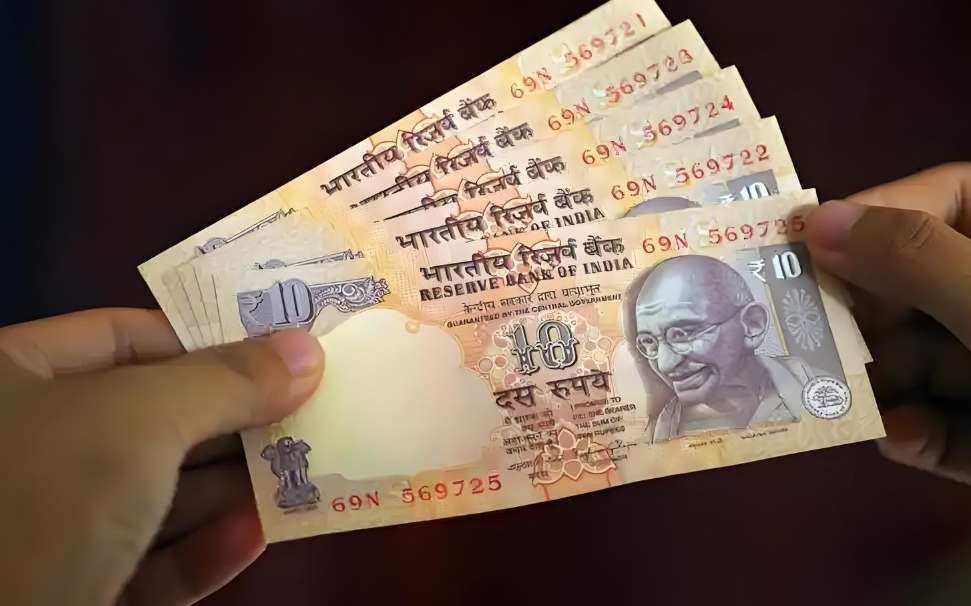The Dollar Devours the Indian Rupee
Advertisements
The economic landscape of the United States is currently caught in a precarious situation, particularly when it comes to the value and management of the US dollar. The Federal Reserve faces a daunting choice: to raise interest rates or not. Each potential course of action poses significant ramifications, not just for the American economy, but on a global scale as well. Raising interest rates could lead to a flood of investment pouring into the US as investors chase higher returns, thereby tightening dollar liquidity worldwide. Conversely, a decision to lower rates might leave dollar holders in a quandary; if they sell their dollars fearing further rate cuts, they risk losing out if the Fed unexpectedly reverses policy to hike rates. The intricate dance of dollar management has profound implications, creating a climate of uncertainty.
To the American populace, the dollar may seem like just another piece of paper, but in the grand theater of global finance, it plays a pivotal role as the world's de facto reserve currency. The complexities of this situation have been further exacerbated by a rising tide of de-dollarization, a trend where nations increasingly seek to reduce their reliance on the US currency. Notably, after the US imposed sanctions against Russia, trade between Russia and China has progressively shifted towards agreements settled in local currencies, posing a substantial challenge to the dollar's hegemonic position.
Fast forward to early 2025, the Federal Reserve's plans for interest rate cuts are accelerating faster than previously anticipated. Discussions about delaying cuts have morphed as the newly elected presidential administration expresses a clear preference for a weaker dollar to boost manufacturing. This situation sees a divergence from the previous policy, where the Fed was hesitant to lower rates, fearing it would hinder dollar devaluation and consequently impede manufacturing growth in the US.
Market analysts predict that upcoming reports on consumer prices will indicate the fifth consecutive month of robust gains, thereby reinforcing the possibility of the Fed maintaining a pause on rate cuts longer than expected. Preliminary figures released by media forecasts hint that core consumer price indices, which exclude volatile food and energy prices, are set to rise by 0.3%, with overall indices increasing by 0.4%. As the labor department gears up to publish its Consumer Price Index (CPI) report, these data points seem to provide the Fed with ample justification to initiate rate cuts.

Regardless of the Federal Reserve's maneuvers, it is evident that the US's overarching aim appears to involve sidelining China's economic aspirations. Nonetheless, the People's Bank of China has long been aware of and prepared for such maneuvers by the Fed. On January 15, the Chinese central bank announced a significant reverse repurchase operation to ensure liquidity in the banking system. This included injecting a hefty amount of 959.5 billion yuan through fixed-rate and quantity tender methods, all aimed at counteracting the impending maturity of medium-term lending facilities (MLFs) due to a taxation peak and holiday cash injections.
This action led to a record net investment via reverse repos, showcasing the central bank's commitment to maintaining a stable currency amidst fluctuating economic pressures. The PBOC has long established a robust strategy to stabilize the RMB exchange rate against significant external pressures, thereby neutralizing many of the Fed's plans.
In stark contrast, China's economic fundamentals show a steady path of growth. By the end of 2024, China reported an 8.0% year-on-year increase in social financing, with broad money supply (M2) rising by 7.3%. The annualized growth in yuan loans reached 7.6%, all outpacing the nominal economic growth rate. Interest rates on loans are on a declining trend with corporate loan rates averaging around 3.43% in December—a decrease from previous periods—and personal housing loans at approximately 3.11%.
Meanwhile, the situation in India starkly contrasts with the perspectives in the US and China. The Indian currency, the rupee, has slumped to record lows, with forecasts suggesting that Monday might witness its largest one-day drop in over two years. The primary drivers of this downfall include a robust dollar, potential outflow of funds from local stock markets, and limited intervention capacity from the Reserve Bank of India (RBI). The rupee has tumbled to 86.5825 against the dollar, a slide near 0.7%, marking a significant fall since February 2023.
India's economic landscape is marred by its persistent trade deficit, akin to a household that consistently spends more than it earns. This financial malaise becomes more pronounced given India's heavy dependence on imports for critical commodities like energy and gold, which are priced in foreign currencies. As the dollar strengthens, the cost of importing these essential goods surges, further depleting India's foreign currency reserves.
In essence, India finds itself in a precarious situation where its foreign reserves are insufficient to meet its import demands. The economic narrative underscores the critical challenge facing the Indian economy and its currency management strategies. This multifaceted scenario, where the interplay of global currencies influences domestic stability, illustrates the complexities of navigating the modern economic landscape.
Categories
Latest Post
- Apple Enters a New Era of Innovation
- Nurturing Innovation: A Gradual Approach
- UK December CPI Unexpectedly Slows Down
- Capitalizing on Industrial Intelligence
- The Dollar Devours the Indian Rupee
- Hope for Federal Reserve Rate Cuts Revived!
- U.S. Stocks Volatile, Nasdaq Sees Decline
- Boosting Efficiency in EV Insurance
- Asia-Pacific Stock Markets Face Headwinds
- Wall Street's Pay Surge: A Financial Shakeup!